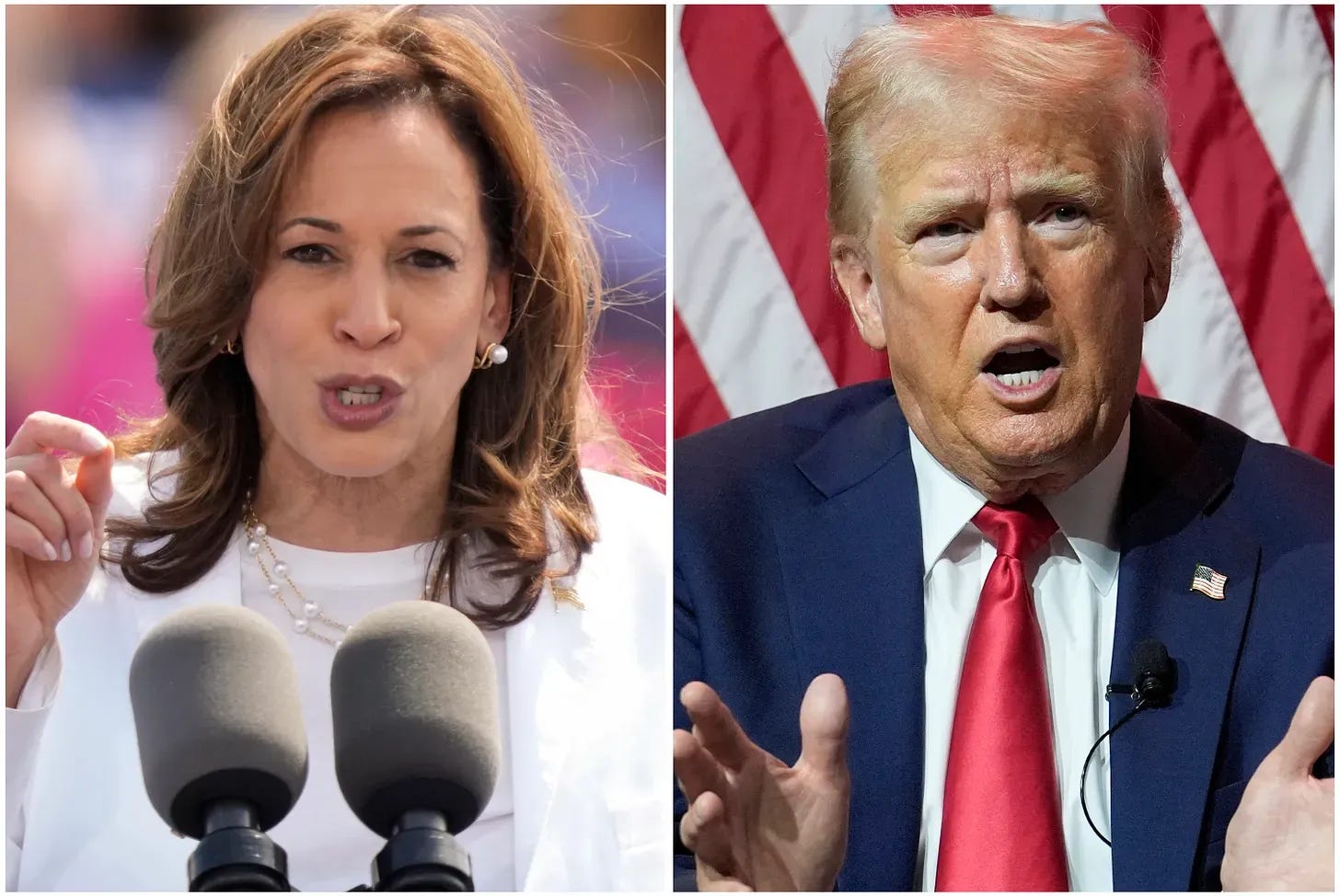Trump, Harris tied in Pennsylvania, Muhlenberg College/Morning Call poll finds
A second new poll shows Harris with slight lead in state

Former President Donald Trump and Vice President Kamala Harris are tied at 48% in Pennsylvania with just 40 days before the Nov. 5 election, according to a Muhlenberg College/Morning Call poll released Wednesday.
This poll, conducted by the Muhlenberg College Institute of Public Opinion in Allentown, follows several polls released last week that showed Harris, the Democratic nominee, with either a slight lead or tied with Trump, the Republican nominee.
Muhlenberg’s poll in the spring, when President Biden was still a candidate, gave Trump a 3 percentage point lead (44%-41%).
Recent stories:
Harris slightly ahead in 4 out of 5 Pennsylvania polls released this week
New poll shows Harris with slight lead over Trump in Pennsylvania and Northampton County
Another poll of Pennsylvania voters, also released Wednesday, by Monmouth University Polling Institute in New Jersey found that 48% of voters will either definitely (40%) or probably (8%) vote for Harris, while 45% said they will definitely (38%) or probably (7%) support Trump.
The poll also found that 46% will definitely not vote for Trump or while 44% said they would not vote for Harris. The Monmouth poll was conducted by telephone and online from Sept. 19-23 with 654 Pennsylvania registered voters. The poll has a margin of error +/- 4.5%.
One thing is clear about polling: The presidential contest in Pennsylvania and nationwide is close. The political data site 538’s average of various Pennsylvania polls shows Harris up, 48.1%-47.1%. In the 538 national polling average, Harris leads Trump, 48.3%-45.8.
Pennsylvania, which tipped the 2020 presidential election to Joe Biden, is once again considered essential to claim the White House. The state has 19 Electoral College votes.
The Muhlenberg poll also shows that U.S. Sen. Bob Casey, a Democrat, leads Republican Dave McCormick by 5 percentage points, 48%-43%, when factoring in people who have decided on a candidate or are likely to vote for him. In April, a Muhlenberg poll showed little change, with Casey up 46%-41%.
Muhlenberg interviewed 450 likely voters in the state between Sept. 16-19. Of the likely voters interviewed by cell phone or landline, 45% were Democrats; 44% Republicans; 9 independents; 3% another party. The poll’s margin of error is +/- 6%.
Other findings from the poll are:
Trump holds a 59%-36% lead among male voters, while Harris leads 59%-38% among female voters.
Trump has an advantage over Harris among voters without a four-year college degree (58%-37%), while more voters with a college degree favor Harris (65%-33%).
Voters are evenly divided over party preferences in their U.S. House districts, with 45% intending to vote for the Democratic candidate and 45% for the Republican.
Asked to identify the top issues in the presidential race, 35% of voters said the economy/inflation is the top issue, followed by abortion/reproductive rights (13%) and immigration/border concerns (11%).
However, broken down by party registration, the poll showed stark differences in priorities. A larger percentage of Democrats compared to Republicans identified abortion/reproductive rights as the top issue (25%-3%). Meanwhile, more Republicans than Democrats said the economy/inflation was their No. 1 issue (55%-18%). Republicans said immigration was more of a concern than Democrats (21%-2%). And 11% of Democrats said protecting democracy/democratic norms was their most important issue compared to only 2% of Republicans.
Confidence in mail voting is a partisan issue in Pennsylvania, with 61% of Democrats saying they are “very confident” that ballots are accurately cast and counted while only 8% of Republicans are. (Democrats typically use mail ballots by a 3-1 margin over Republicans in the state.)
Gov. Josh Shapiro, among the finalists to be the Democratic vice presidential candidate before Minnesoa Gov. Tim Walz was selected, continues to have a high approval rating of 59% among Pennsylvania voters.




